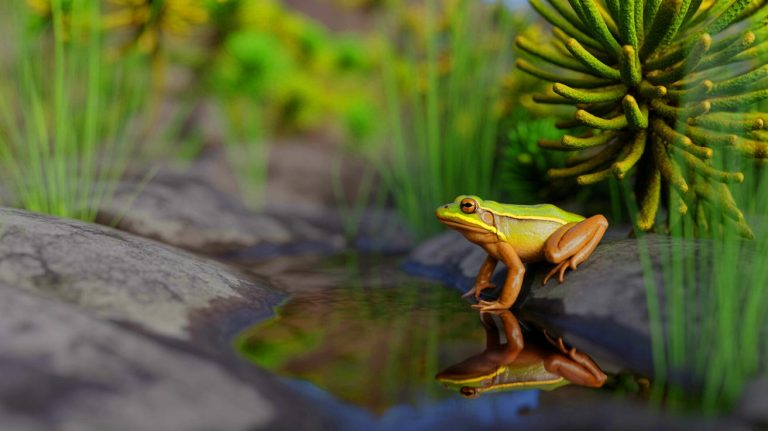| IN A NUTSHELL |
|
In a stunning revelation, researchers have uncovered a rare amphibian species believed to be extinct for over 120 years in the Chilean Andes. The rediscovery of Alsodes vittatus, a small frog, marks one of the most significant scientific breakthroughs in South America in recent years. This amphibian, known only from historical records and a single specimen, was found in isolated mountain streams, breathing new life into the scientific community’s quest to understand and conserve biodiversity. The implications of this discovery extend beyond the frog itself, raising questions about what other species might still be hiding in the shadows of extinction.
The Vanished Amphibian: A Century of Silence
The story of Alsodes vittatus is a tale of mystery and rediscovery. First described in 1902 by the German naturalist Rudolph Amandus Philippi, the frog was noted for its distinctive yellowish stripe running along its back. However, after its initial discovery, the species seemingly vanished from the scientific radar, with no confirmed sightings for over a century. Despite numerous search efforts between 1995 and 2002, the frog remained elusive, leading many to fear it was extinct or never a valid species.
The rediscovery in the Chilean Andes marks the end of a century of silence. This endemic frog’s reappearance is not just about the return of a lost species; it’s a testament to the resilience of nature and the importance of persistent scientific inquiry. The sighting of Alsodes vittatus in its natural habitat highlights the critical need for ongoing efforts to locate and protect other potentially endangered species in the region.
A Detective Story in the Andes
The journey to rediscover Alsodes vittatus is a fascinating blend of historical detective work and modern biology. Led by Dr. Claudio Correa from the Universidad de Concepción, the research team delved into the past, examining travel accounts from the French entomologist Philibert Germain, who collected the original specimens in 1893. By retracing Germain’s steps across the Andes to Hacienda San Ignacio de Pemehue, now on the border of Chile’s Biobío and La Araucanía regions, the researchers identified specific valleys to focus their searches.
From 2015 to 2024, the team conducted field expeditions primarily at night, when the frogs are most active. Their perseverance paid off as they discovered five previously unknown populations of Alsodes frogs. Among these, three were confirmed to be the long-lost Alsodes vittatus, residing in remote streams at elevations between 4,660 and 5,280 feet. These cold, rocky streams are nestled among temperate forests, creating a unique ecosystem that has allowed this species to survive undetected.
Surprising Twists: The Frog’s Secret Life Revealed
The rediscovery of Alsodes vittatus has unveiled unexpected surprises about its biology and genetics. Researchers observed variations in the frog’s appearance, particularly the yellowish stripe once thought to be a defining feature. In some individuals, the stripe was prominent, while in others, it was absent, explaining why earlier searches may have overlooked the species.
DNA analysis revealed another twist: Alsodes vittatus populations were genetically close to Alsodes neuquensis, a species known only from Argentina. Remarkably, one specimen of A. vittatus was genetically closer to A. neuquensis than to other A. vittatus individuals from the same location. This finding raises intriguing questions about whether these frogs might actually constitute a single species spanning both sides of the Andes, prompting a potential revision of their taxonomic status.
The Conservation Race: Is It Too Late for the Frog?
The rediscovery of Alsodes vittatus is exhilarating, yet its future is uncertain. The frog inhabits a mere eight square miles, a habitat threatened by deforestation, livestock grazing, invasive species like introduced trout, and climate change. Researchers recommend reassessing the frog’s conservation status, possibly moving it from Critically Endangered to Endangered, though threats remain substantial.
During their surveys, researchers observed diverse coloration among the frogs. Adult males ranged from light brown with yellow and green hues to olive brown, while some juveniles exhibited darker brown tones. In a particularly exciting find, smaller frogs with a dark brown stripe closely matched Philippi’s original 1902 illustration, suggesting he may have based his classification on juvenile specimens. This research not only highlights the resilience of A. vittatus but also underscores the broader implications for biodiversity conservation. It suggests that other species, thought extinct, may persist undetected in remote ecosystems.
The rediscovery of Alsodes vittatus offers hope amid the global biodiversity crisis, underscoring the importance of persistent exploration and conservation. With new habitat data, efforts can now focus on protecting these critical areas. However, the frog’s survival hinges on addressing habitat threats, including climate change and invasive species. As scientists work to safeguard this unique amphibian, we must ask: How many other “extinct” species might still await rediscovery, hidden in the world’s unexplored corners?
Did you like it? 4.6/5 (20)








Wow, 120 years! Just goes to show nature can sometimes surprise us. 🌿
I’m curious, how did the researchers manage to find it after all this time?
Looks like frogs really know how to play hide and seek! 🐸😄
This is amazing news! What are the next steps for conservation?
120 years? Who was keeping track, Rip Van Winkle? 😂
This gives me hope that maybe other “extinct” species are still out there.
Does this mean the frog was hiding in plain sight all along?
Incredible find! I hope this means good things for biodiversity efforts in the region.
Why did it take so long to rediscover this species? 🤔